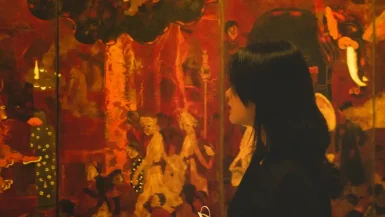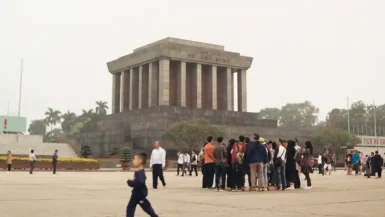Vietnamese culture offers tourists a rich tapestry of traditions, history, and customs. As you explore the country, understanding and respecting its cultural nuances can enhance your travel experience. Here’s a comprehensive guide to Vietnamese culture for tourists.
Firstly, Vietnamese culture is a blend of ancient traditions and modern influences, making it a unique experience for visitors. The country’s long history is reflected in its diverse cultural practices, from the bustling streets of Hanoi to the tranquil countryside. Additionally, art and literature hold a significant place in Vietnamese culture, with traditional forms like water puppetry and silk painting being popular among locals and tourists alike. Moreover, the Vietnamese people are known for their hospitality and friendliness, always ready to share their culture with visitors. Furthermore, engaging with locals and participating in their customs provides deeper insights into their way of life. Overall, Vietnam offers a unique opportunity to witness the harmonious coexistence of ancient traditions and contemporary life.
Cuisine plays a vital role in Vietnamese daily life, with meals often being communal and enjoyed with family. Street food is an integral part of the culinary experience, offering a wide array of flavors and dishes to try. Festivals are celebrated with great enthusiasm, showcasing traditional music, dance, and rituals that have been passed down through generations. Language is a crucial aspect of culture, and while Vietnamese is the primary language, English is widely spoken in tourist areas, making communication easier for travelers. The country’s natural beauty, from its lush rice terraces to its pristine beaches, is deeply intertwined with its cultural identity.
Respecting local customs and traditions can greatly enhance your experience and build positive connections with the locals. Whether you’re visiting a bustling city or a serene village, taking the time to learn about and appreciate Vietnamese culture will make your trip unforgettable.
The Importance of Family
Family holds a central place in Vietnamese culture. Families often live together in multi-generational homes. Elders command great respect, and their opinions carry significant weight in family decisions. When visiting, showing respect to elders is crucial. A simple gesture, like a slight bow, can convey your respect. People often consult elders for advice on important matters, such as marriage and business. During meals, the family serves the eldest member first. Celebrations, like Tet, bring entire families together, reinforcing bonds. Younger members care for their elders as they age. Homes commonly have family altars dedicated to ancestors. People perform rituals and offerings to honor deceased relatives. The family structure emphasizes collective harmony over individualism. Children learn to respect family ties from a young age. Family gatherings often involve sharing stories and maintaining traditions.
Festivals and Celebrations
Vietnamese festivals reflect the nation’s rich heritage and deep-rooted traditions.
Tet Nguyen Dan (Lunar New Year): Tet is the most important festival in Vietnam. It marks the arrival of spring based on the lunar calendar. Families clean their homes to welcome the new year, visit temples, and offer ancestral worship. Streets come alive with colorful decorations, traditional music, and vibrant markets.
Mid-Autumn Festival: Celebrated in September or October, this festival honors the harvest. Children enjoy lion dances, lantern processions, and mooncakes. It’s a joyful time to witness traditional performances and vibrant parades.
Religion and Spirituality
Vietnam is a land of diverse spiritual practices.
Buddhism: Predominantly, Buddhism shapes many aspects of Vietnamese life. You’ll find numerous pagodas and temples across the country. Visitors are welcome, but remember to dress modestly and maintain a respectful demeanor.
Ancestor Worship: Ancestor worship is a significant part of Vietnamese culture. Families set up altars in their homes to honor deceased relatives. During festivals and special occasions, they offer food, incense, and flowers to their ancestors.
Etiquette and Manners
Understanding local etiquette can make your interactions smoother.
Greetings: A handshake accompanied by a slight bow is a common greeting. For elders, clasping hands and bowing lower shows respect.
Dining Etiquette: When dining, wait to be shown where to sit. It’s polite to let the elders begin eating first. Using chopsticks properly is essential. Don’t stick them upright in a bowl of rice, as it resembles incense at funerals. Pass dishes using both hands as a sign of respect.
When taking food from shared dishes, use the serving utensils provided. Avoid pointing with your chopsticks, as it’s considered impolite. Try to finish everything on your plate, as leaving food can be seen as wasteful. If you are full, say you are satisfied rather than refusing the food directly. Slurping your noodles is acceptable and shows you are enjoying your meal.
When visiting someone’s home, bring a small gift, such as fruit or sweets, as a token of appreciation. Take off your shoes before entering the house. Address people by their titles and last names unless invited to use their first names.

Traditional Clothing
Ao Dai: The Ao Dai is the national costume, worn on special occasions and during traditional ceremonies. It is a long, flowing dress with slits on both sides, worn over trousers. The elegant attire represents the grace and beauty of Vietnamese women. Designed to fit close to the body, the Ao Dai highlights the wearer’s figure while maintaining modesty. Vietnamese often make this dress from silk or other fine fabrics, adorned with intricate embroidery or patterns.
Men also wear Ao Dai, particularly during weddings and cultural events, though their version is typically less fitted and more subdued in color. Colors and designs can signify different meanings, with white symbolizing purity and often worn by students. Brightly colored Ao Dai are common during festive occasions and celebrations. The Ao Dai has evolved over time, with modern versions incorporating contemporary styles and fabrics. Despite these changes, it remains a symbol of Vietnamese identity and pride. Wearing an Ao Dai can make tourists feel a deeper connection to Vietnamese culture. When visiting Vietnam, don’t miss the chance to try on an Ao Dai and capture some beautiful memories.
Language
Vietnamese is a tonal language with six different tones. A word’s meaning can change based on its tone. While learning Vietnamese can be challenging, mastering a few basic phrases can be very helpful. Locals appreciate any effort to speak their language.
Common Phrases:
- Hello: Xin chào
- Thank you: Cảm ơn
- Yes: Vâng
- No: Không
- How much is this?: Cái này bao nhiêu tiền?
Vietnamese Cuisine
Vietnamese cuisine is a delightful exploration of flavors and textures. The culinary diversity reflects the country’s regional variations and historical influences.
Pho: This iconic noodle soup is a must-try. It consists of broth, rice noodles, herbs, and meat, usually beef or chicken. The cooks simmer this broth for hours, often overnight, to achieve its rich flavor.
Banh Mi: A fusion of French and Vietnamese cuisine, Banh Mi is a baguette filled with various ingredients like meats, pickled vegetables, and herbs. The crunchy bread and savory fillings create a perfect balance of textures.
Spring Rolls: These come in two varieties: fresh (goi cuon) and fried (cha gio). Both are delicious and widely available. Vietnamese serve fresh spring rolls are often with a peanut dipping sauce, while fried ones come with a sweet and sour fish sauce.
Bun Cha: A Hanoi specialty, Bun Cha consists of grilled pork patties, vermicelli noodles, and fresh herbs, served with a dipping sauce. It’s a favorite among locals and tourists alike.
Cao Lau: This dish from Hoi An features thick noodles, slices of pork, fresh greens, and crunchy croutons. The noodles are unique, made with water from ancient Cham wells.
Mi Quang: Mi Quang, a central Vietnamese noodle dish, features a turmeric-infused broth, shrimp, pork, and rice noodles. Peanuts and fresh herbs often garnish it.
Com Tam: Popular in the south, Com Tam features grilled pork, a fried egg, pickled vegetables, and fish sauce served over broken rice. It’s a staple street food in Ho Chi Minh City.
Hue Beef Noodle Soup (Bun Bo Hue): This spicy, flavorful soup from Hue features beef, pork, and thick rice noodles. The chef seasons the broth with lemongrass and shrimp paste.
Che: A variety of Vietnamese sweet soups, puddings, and drinks, Che includes ingredients like beans, tapioca, jelly, and fruit. It’s a refreshing dessert, especially on hot days.
Vietnamese Coffee (Ca Phe): Renowned for its strong flavor, Vietnamese coffee pairs with sweetened condensed milk. Try it iced (ca phe sua da) for a cooling treat.
Arts and Music
Traditional Vietnamese music and art reflect the country’s history and diversity.
Water Puppetry: This unique art form dates back to the 11th century. Performances depict scenes from rural life and folklore, with puppets dancing on water.
Traditional Music: Instruments like the dan bau (monochord) and dan tranh (zither) create mesmerizing sounds. Traditional music often accompanies festivals and religious ceremonies.
Architecture
Vietnamese architecture blends indigenous, Chinese, and French influences.
Traditional Houses: In rural areas, houses are often built on stilts. These structures provide protection from floods and pests.
Colonial Architecture: In cities like Hanoi and Ho Chi Minh City, you’ll find beautiful examples of French colonial architecture. Buildings feature shuttered windows, wrought iron balconies, and tiled roofs.
Social Norms
Saving Face: Maintaining harmony and avoiding conflict is important in Vietnamese culture. Public confrontations or showing anger can lead to a loss of face, which is to be avoided. Instead, address conflicts privately and calmly. Positive reinforcement and gentle suggestions work better than direct criticism. This cultural value is deeply embedded in social interactions. Keeping a composed demeanor is appreciated. Respectful communication fosters better relationships. Additionally, humor can help diffuse tense situations. Being mindful of others’ feelings is key to harmonious interactions.
Gift Giving: Gifts are a common way to show appreciation. When giving or receiving gifts, use both hands. Avoid giving sharp objects, as they symbolize cutting off the relationship. Red or yellow wrapping paper brings luck. Avoid black or white, as people associate them with funerals. Recipients usually do not open gifts in front of the giver. Express gratitude verbally to show politeness. People often prefer small, thoughtful gifts over expensive ones.When visiting someone’s home, bringing a gift is a nice gesture. Local specialties make excellent gifts, showcasing regional pride.
Daily Life
Markets: Visiting local markets is a great way to experience daily life. Markets are bustling with activity, offering everything from fresh produce to handicrafts. Each market has its unique character and charm. In Hanoi, the Dong Xuan Market is a must-visit for its variety of goods. In Ho Chi Minh City, Ben Thanh Market is a popular spot for both locals and tourists. Don’t forget to try street food at the market; it’s a culinary adventure. Haggling is common, so feel free to negotiate prices. Morning visits are best to see the market at its liveliest. Local markets also offer an opportunity to interact with friendly vendors. Many markets feature sections dedicated to clothing, accessories, and souvenirs.
Transportation: Motorbikes are the primary mode of transportation. In cities, you’ll see streets filled with motorbikes, often carrying entire families or bulky goods. Motorbike taxis, known as “xe om,” are a convenient way to navigate the city. For a unique experience, try a cyclo ride, a type of cycle rickshaw. Public buses are available in major cities, offering an affordable travel option. Ride-hailing apps like Grab are famous for both motorbike and car rides. Renting a motorbike is a popular choice for exploring more remote areas. Be cautious when crossing streets, as traffic can be overwhelming. Trains provide scenic journeys between major cities. Domestic flights are quick and efficient for long-distance travel.
Conclusion
Vietnam offers a unique opportunity to witness the harmonious coexistence of ancient traditions and contemporary life. From the bustling markets of Hanoi to the serene landscapes of the Mekong Delta, each region has its distinct charm. Engaging with locals and participating in their customs provides deeper insights into their way of life. Savoring authentic Vietnamese cuisine and witnessing traditional performances enriches your cultural understanding. Every interaction and experience in Vietnam contributes to a profound appreciation of its heritage and modernity.



